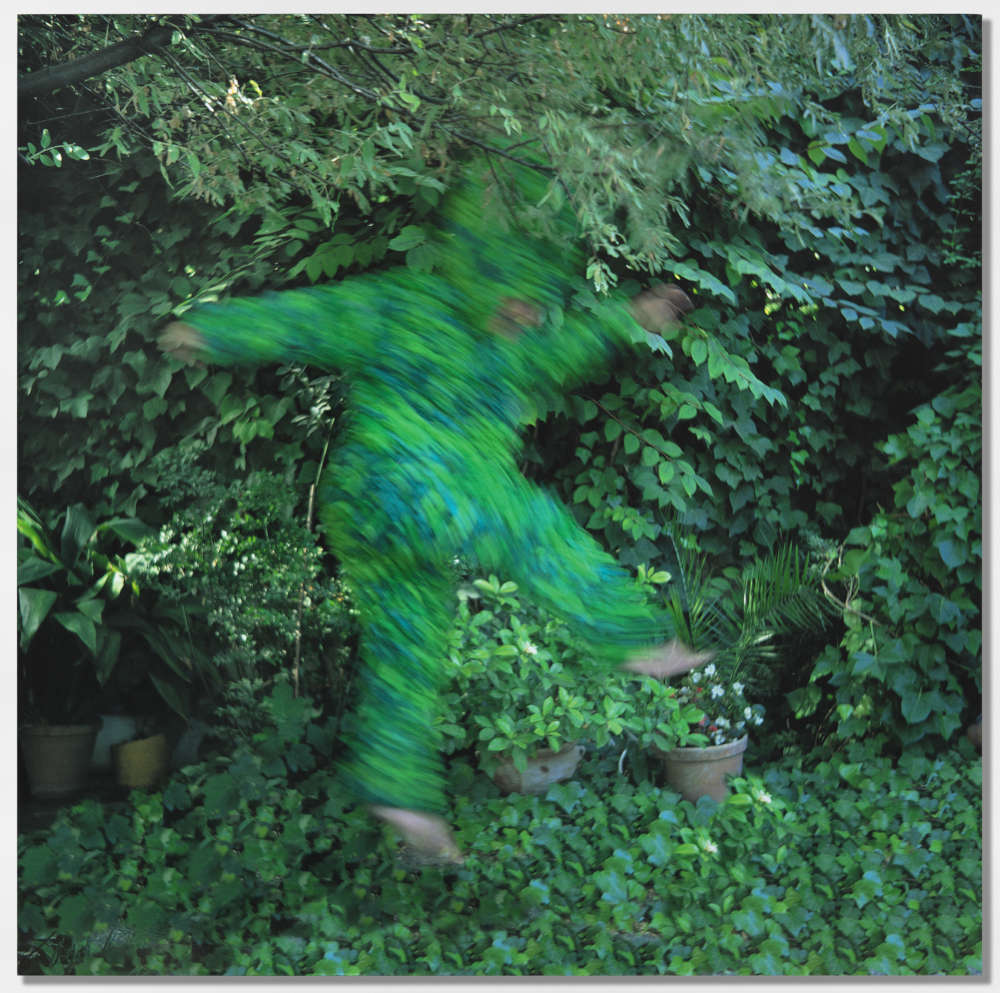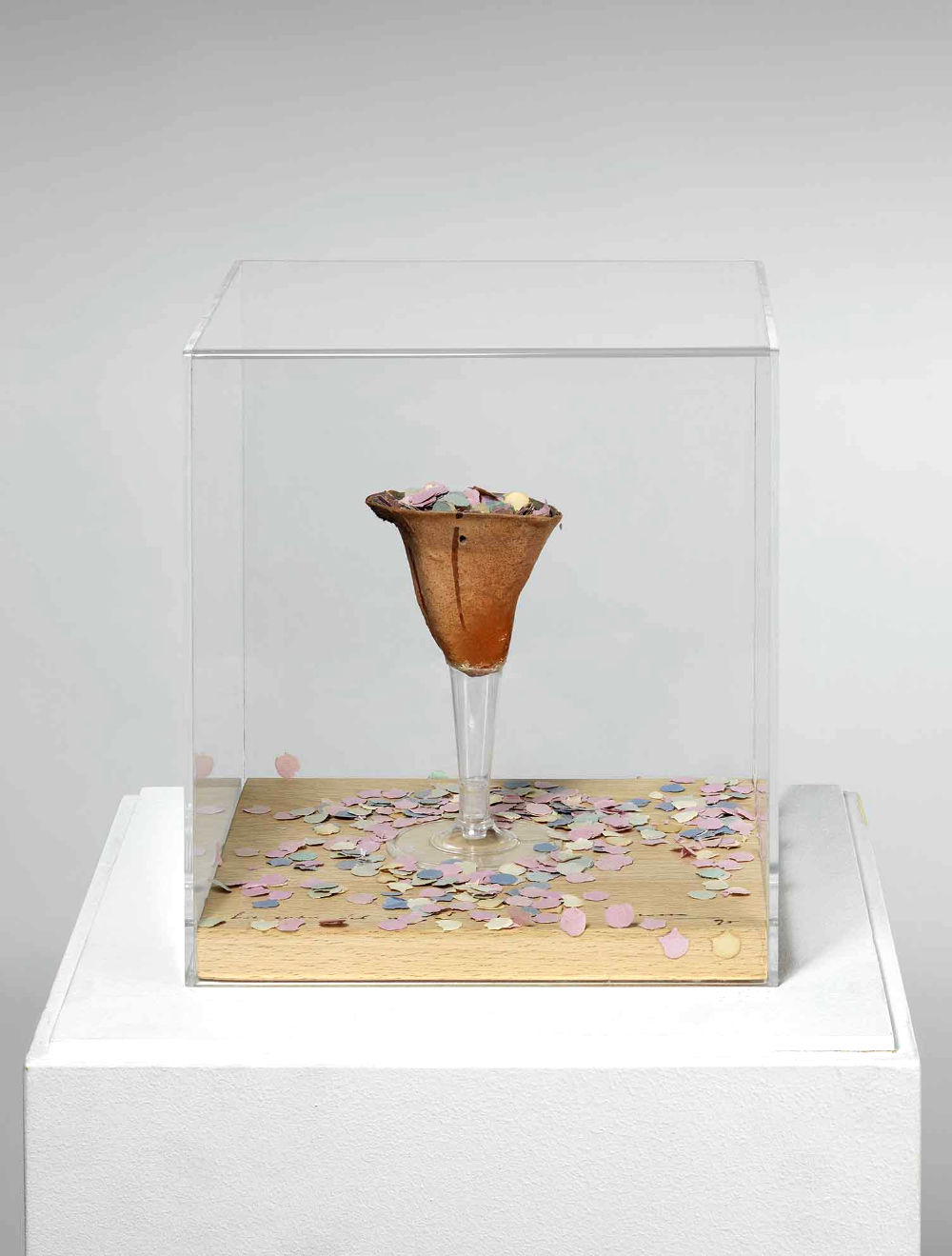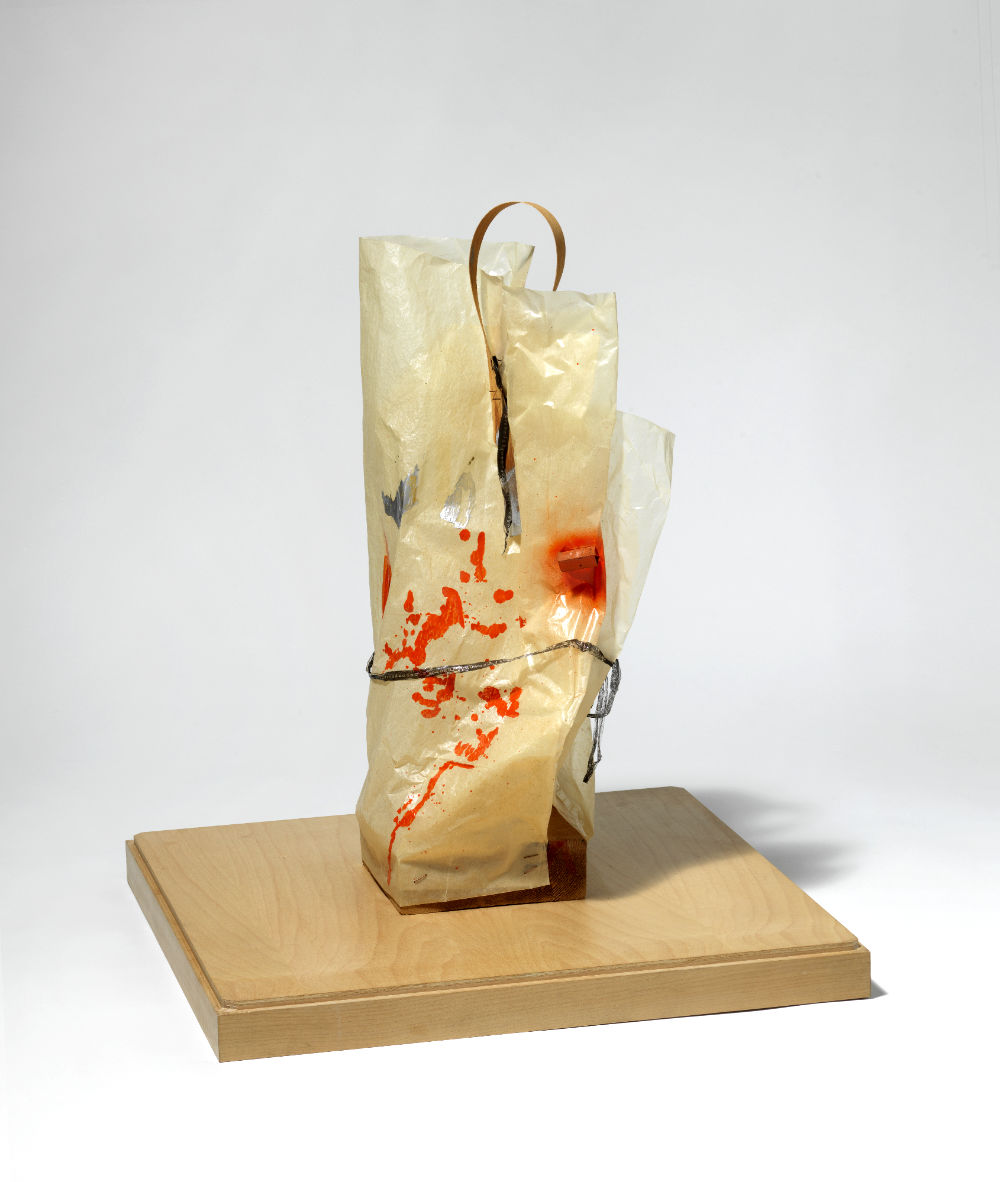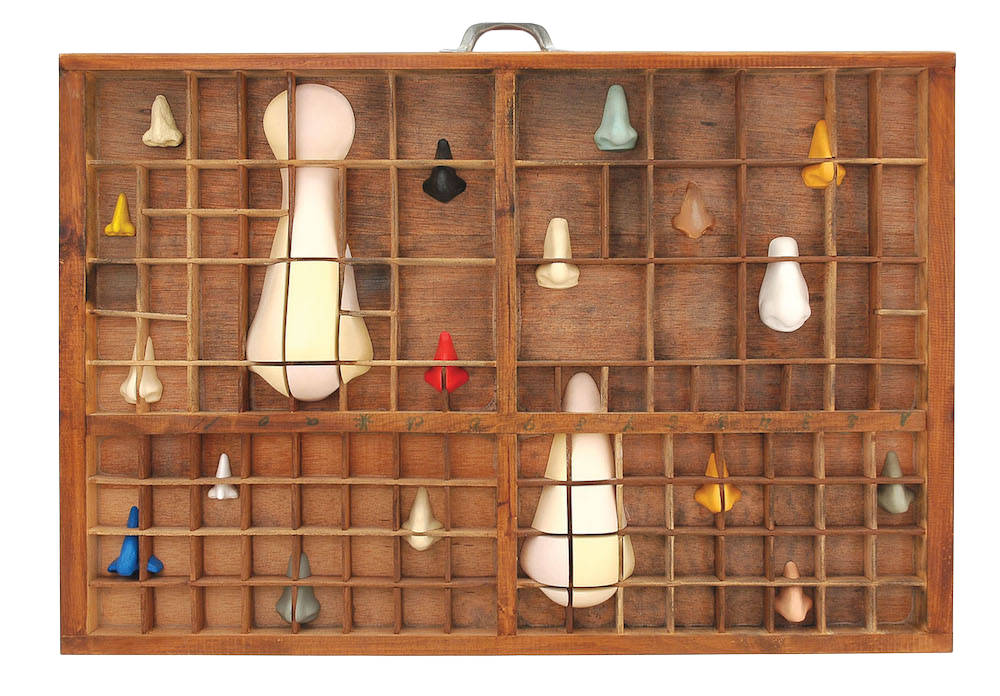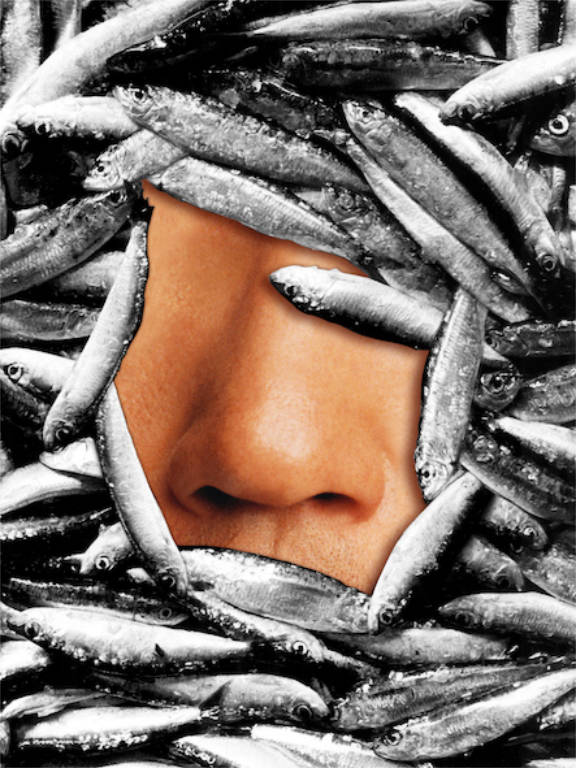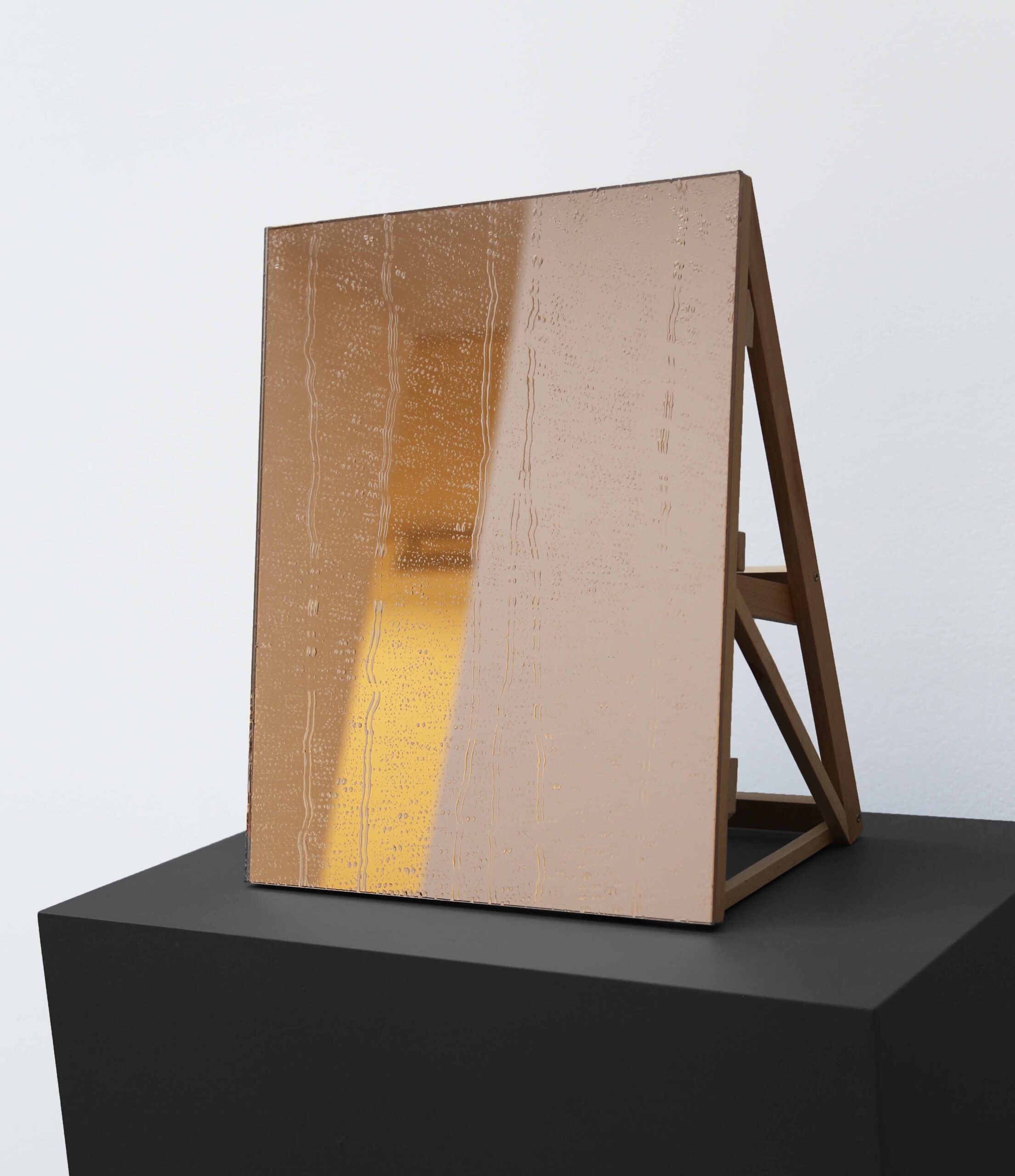
Mirrors, never until now have the secrets
of your essence been told. Blind intervals of time, perfect eyes
of sieves that fill absences.
Rilke, Sonnets to Orpheus
Let’s be clear: our sense of smell has been losing functionality that our body has substituted by other senses: it is no longer essential for our survival. But is the mirror image essential? Is the conception of the real? What is the functionality of sight? ‘The scent […] was like a fragment of the past,’ Proust told us, but there is no longer emotion, and perhaps that is why there is no past, and ‘things’ no longer smell. Atrophied instincts combine with atrophied emotions, and vice versa. In an isolated individual (the present person), smell will not connect with the emotional; we might add that the reflection has no smell and the image that appears is distorted (by the water and the colour of the mirror). The ‘I’ sought in the reflection does not exist, it does not give off an aroma, it is a fragmented reality in which we search in anguish for a ghostly, non-existent essence.
But the mirror, in its origins, lends itself to a different kind of knowledge, analogical and spiritual. It invites the spirit to free itself from the sensible and pay the cause from the effect; that is, to examine the world through intelligence and arrive at the essences. The famous ‘know thyself’. Deprived of reality, the reflection affords access to the sign. The mirror invites the gaze to transcend appearances, but what happens if the mirror distorts? If it is foggy or cloudy? If some extraneous element blocks the sight of it? The disturbed mirror sifts the real and dyes it with a mantle of delicate sadness, confusion and silent lament. In this way the already misty air that every reflected image has is accentuated.
This curious object, first offered to human kind to enable us to better understand our soul and triumph over our vices, is currently perverted and used for shamefully material purposes. Luxury, excess and the dominance of the senses have distorted its use. The mirror now appears to fill up and mourn an absent reality. Without functionality and with extreme freedom, today’s object-persons are left without a soul, without symbolism. A liquid reality, damp and melancholy. There also appears, in a baroque turn of the screw, contact in the reflection. Things, appearances and products multiply: each object superimposed on its surface multiplies the reflection. Interferences impede the formal encounter, distorting and filtering the experience of the encounter with the I. The image appears blurred and we can only recognize ourselves now in scattered fragments. The I acquires a taste for knowing itself as another, it is liberated. There is less strangeness. But the proliferation of reflections ends up dispersing and undermining the individual, hopelessly confusing us.
Reflection of the reflection, it is hard to see oneself in these manipulated mirrors. Identity is ever more distant, doubly distant. ‘Aggressive mirrors, empty mirrors, blurred mirrors: these specular disorders
always reveal a serious identity crisis.’ It seems to point to a state of psychic disorganization, a strange kind of anamorphosis. The subject seems to be a stranger to herself who tries to recognize herself in the few scattered fragments that the manipulated mirror allows her (I realize that I am not only incapable of representing the human being but I also prevent her from mimetically finding herself in her reflection); In this way, the very notion of the subject is called into question and is dismembered. There appear only chance effects, dispersions: anonymous and fragmentary Is looking without recognizing themselves, seeing only a being looking at a being being looked at. The loss of identity, the confusion of oneself with the other, with other. Interchangeable identities. Mirrors that therefore reveal nothing, that simply immerse themselves in the anonymity of the person. ‘Mute surface,’ as Borges rightly observed in pointing the present-day world of immediacy, imitation and oblivion: ‘where all is event and nothing is memory.’
Broken mirrors, simulation, confusion and emptiness. Chaos and unintelligibility. The humanistic injunction to know thyself is replaced by indifference and decomposition; it no longer possesses a symbolic function.
As every psychiatrist knows, the deterioration of the mirror image is one of the clear signs of dementia, with total indifference being the last stage of that condition. Disillusion and tedium, impersonality. The individual herself transformed into a mere image, omnipotence of appearance.
Jorge Perianes
